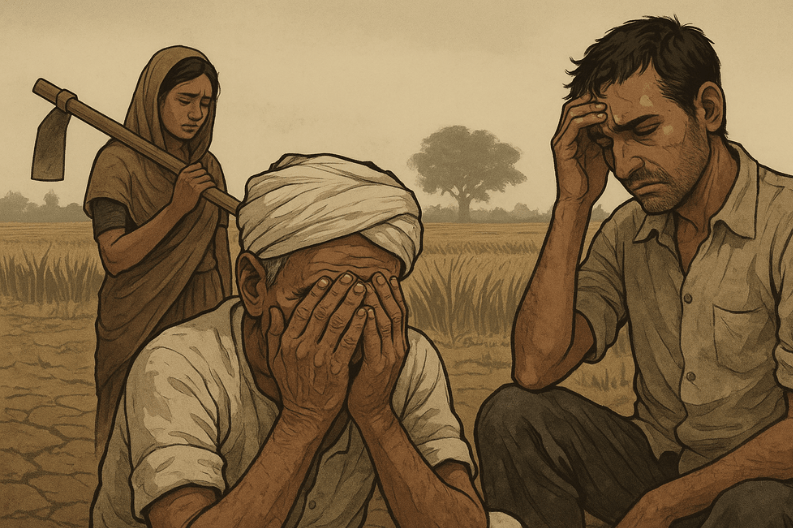In 2023, the tragic reality of suicides among farmers and agricultural laborers in India continues to worry the nation. The National Crime Records Bureau (NCRB) reported that 10,786 people in the farming sector took their own lives this year. The figure includes 4,690 farmers and 6,096 agricultural labourers, making up 6.3% of all 171,418 suicide victims across the country.
Although this year’s number shows a small decline of over 4% compared to 2022, when 11,290 such suicides were recorded, the crisis still demands urgent attention.
Maharashtra reported the highest number of suicides with 4,151 deaths, contributing more than 38% of the national total. Karnataka followed with 2,423 cases, representing 22%. Other states also showed large figures, including 925 in Andhra Pradesh, 777 in Madhya Pradesh, and 631 in Tamil Nadu. Together, Maharashtra and Karnataka alone accounted for more than 60% of suicides among farmers and labourers.
The NCRB divides farm-related suicides into two categories: those by farmers, who cultivate their own land, and those by agricultural labourers, who depend on farm work for wages. Both groups face different but interconnected challenges.
Experts point out that one major factor is the heavy reliance on cash crops such as cotton and sugarcane. These crops require high investment, often forcing farmers to borrow money from lenders. When crops fail due to poor rains, pests, or market fluctuations, the financial stress becomes unbearable.
The government has introduced several schemes to help. These include easy crop loans, the PM-Kisan income support plan, and affordable crop insurance. While these measures provide relief, many still face debt and rising costs.
Interestingly, some states and Union Territories reported zero farm suicides in 2023. These include West Bengal, Bihar, Odisha, Jharkhand, Himachal Pradesh, Goa, Manipur, Mizoram, Nagaland, Tripura, Chandigarh, Delhi, and Lakshadweep. These areas provide examples that effective policies and community practices can reduce distress.
Gender data also tells a story. Among the farmers who died by suicide, 4,553 were men and 137 were women. For labourers, 5,433 were men and 663 were women. While men form the majority, women’s struggles also need attention.
The issue is complex, linked not only to financial losses but also to mental health pressures and lack of support networks. Experts stress the importance of improving rural healthcare, expanding awareness on mental well-being, and ensuring fair prices for crops. Communities, non-profits, and government agencies must work together to address the root causes.
In conclusion, while the slight decline in numbers brings a ray of hope, the scale of suicides among farmers and agricultural labourers remains alarming. Tackling this crisis requires collective efforts, better financial safety nets, mental health support, and stronger farming systems. Only then can we move towards a future where farming communities live with dignity and hope. 🌱



